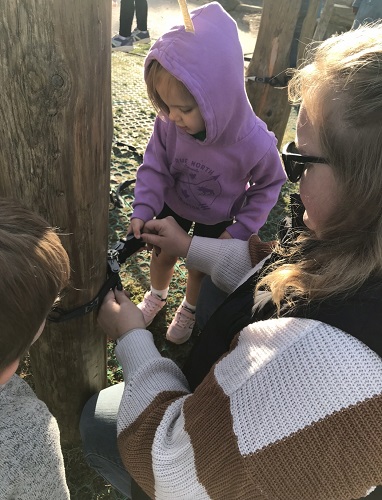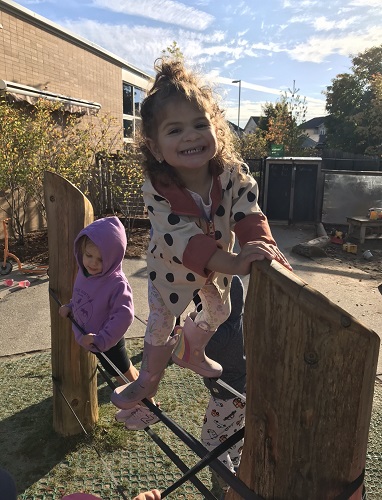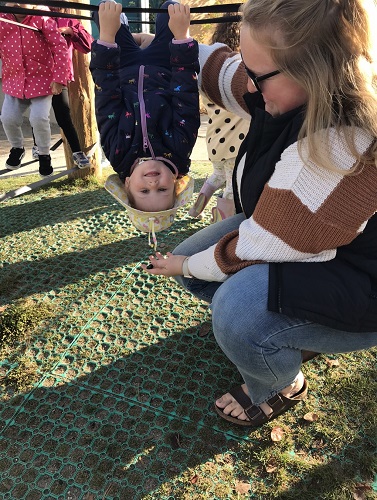This morning the preschoolers helped set up the ratchet straps outside. We gathered them from the shed, and the preschoolers went to work unraveling them. They all took turns to help hold the straps up, connect them, and carefully crank the straps so they were tight. While we connected all the straps, we talked about safe spots to put our hands so they do not get pinched. Once all the straps were up, the preschoolers started to explore. Lainey right away came over and knew exactly what to do. She held onto the straps with her hands, and swung her legs up, and hooked the back of her knees on the other strap. She held her head back, and smiled at her peers. She brought her legs back down, and started to help her peers, showing them how they can hang upside down as well. The preschoolers all looked at what each other was doing, and they all supported each other in their moves. “I put my foot here” Amelia said, showing her peers. “I can hold it like this. You can too!” Reid said. “If you put out your hand here you can do this!” Camryn said, lifting her body up. The preschoolers used their coordination, gross motor skills and self-awareness today. Along with that, the preschoolers also participated in risky play. Risky play is a type of play that creates exciting forms of free play that has elements of uncertainty. Risky play encourages children to listen to their own bodies, and determine what they believe is safe. This creates a space where children can climb, jump, balance and explore, all while listening to their body about what feels safe and comfortable for their abilities. Risky play also encourages children to self reflect on the environment and actions they are taking, and use that going forward to find different opportunities for their own growth and development. There are many different ways risky play can be experienced. On our playground some of these ways have been by using the ratchet straps, climbing on the stumps and logs, setting up swings, balancing on small and large objects and so much more. Outside of our playground, we have experienced risky play by going to the forest behind our school, using public parks, and even creating activities within our classroom designed to encourage children to listen to their bodies and what makes them feel safe. While participating in risky play, it is important for the adult to allow children to do “dangerous things carefully”. This is a quote being shared that expresses the importance of allowing children to make their own choices, actions and limitations, in safe environments. As educators we remove elements of increased danger, and allow the children to explore their environments carefully, supporting them in whichever way they need. For example, instead of saying “be careful”, we say, “does your body feel safe?”. This allows the child to determine whether or not they feel like they are in a safe situation, recognize their body cues, and helps them determine their next moves.












